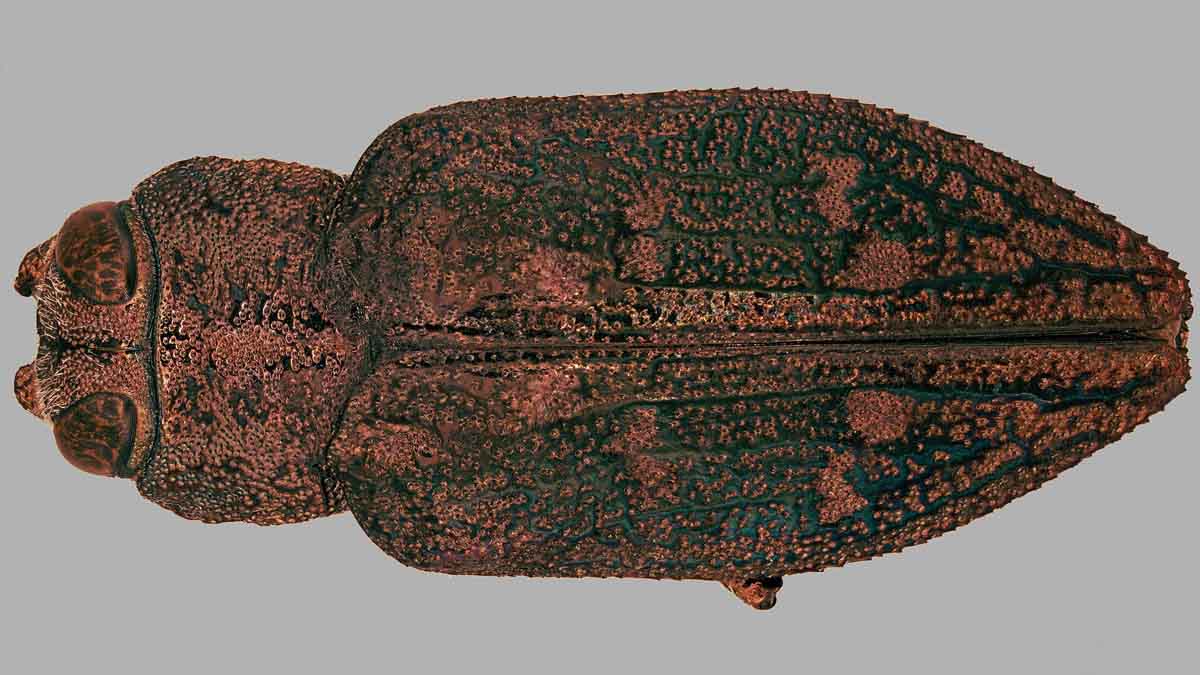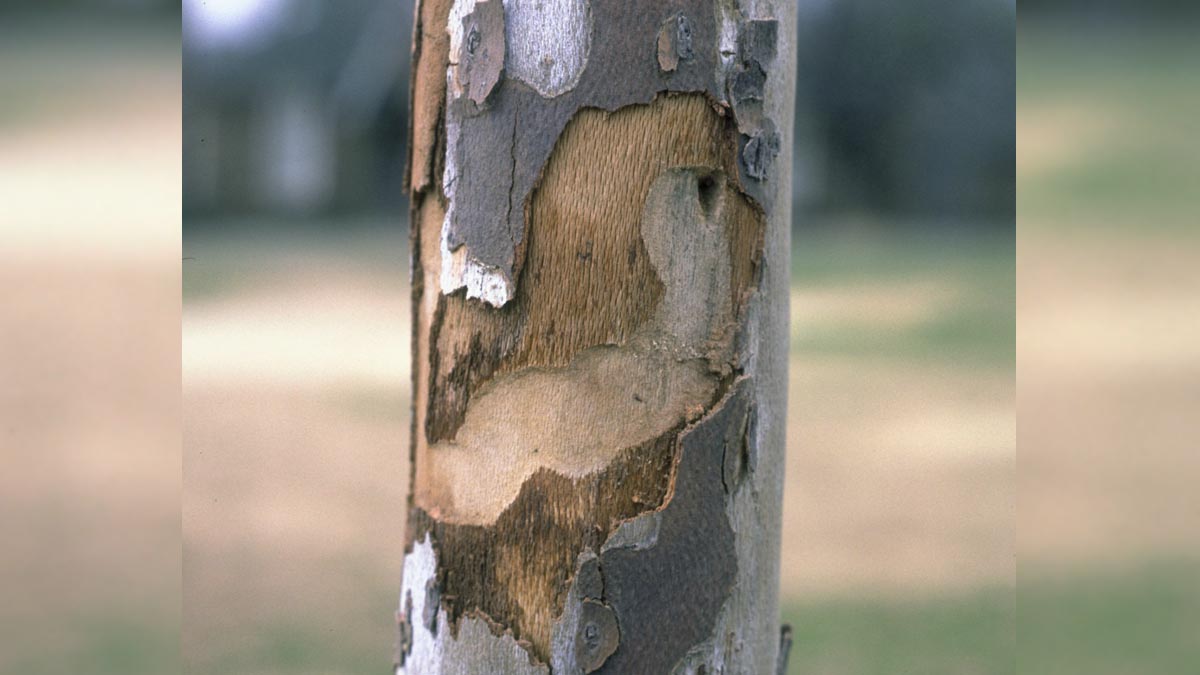Flatheaded Borer
Pest Common Name
- Flatheaded Borer (Chrysobothris mali Pacific Flatheaded Borer; Chrysobothris femorata Flatheaded Apple Tree Borer)
- Most fruit trees, including apple, plum, prune and cherry
- Hazelnut trees
Adults are a flattened oval shaped beetle, usually reddish bronze in color with copper-colored spots on the wing covers between a quarter to half an inch long (Figure 1). Larvae are whitish to pale yellow and about a half inch (1.3cm) long when mature. Larvae are distinguished from other borers by the large, flattened area behind the head.
Biology
Mature larvae overwinter in the trees and emerge in the spring usually in May and June. Females will lay eggs under bark crevices on the sunny side of the trunk or sun scalded areas of the bark during June and July. Eggs hatch and larvae burrow into the bark and feed in the cambium and vascular tissue area until mature.
Damage
Larvae feed below the bark and can girdle branches and trunks particularly on small and newly planted or stressed trees. Tunneling is usually broad and irregular. Watch for frass coming from depressions in bark cracks (Figure 2).


Management
Biological
- Birds will prey on larvae under the bark
- Some parasitic wasps will target larvae under the bark
- Carpenter ants will prey on larvae and pupae
Cultural
- Keep trees healthy and paint trunks and stems with a white latex paint to prevent sun scald
- Keep trees healthy with adequate water, fertilizer, and pruning
- Remove weeds and tall grasses from around the trunk to allow predators access
- Remove infested limbs from the area
Chemical
- Tree-specific recommendations for pesticides to use in the management of flatheaded borers can be found on the PNW Insect Management Handbooks website
Pesticide Warning
Always read and follow the instructions printed on the pesticide label. The pesticide recommendations in this University of Idaho webpage do not substitute for instructions on the label. Pesticide laws and labels change frequently and may have changed since this publication was written. Some pesticides may have been withdrawn or had certain uses prohibited. Use pesticides with care. Do not use a pesticide unless the specific plant, animal or other application site is specifically listed on the label. Store pesticides in their original containers and keep them out of the reach of children, pets and livestock.
Trade Names — To simplify information, trade names have been used. No endorsement of named products is intended nor is criticism implied of similar products not mentioned.
Groundwater — To protect groundwater, when there is a choice of pesticides, the applicator should use the product least likely to leach.
- Figure 1. Steven Valley, Oregon Department of Agriculture, Bugwood.org
- Figure 2. James Solomon, USDA Forest Service, Bugwood.org
Andy West, Extension Educator, Horticulture
2023








